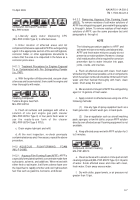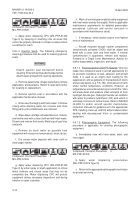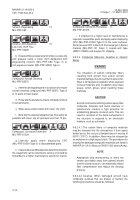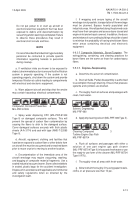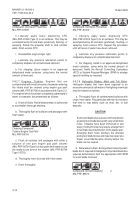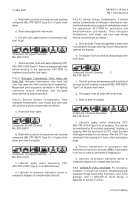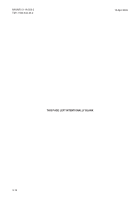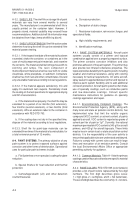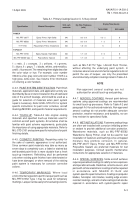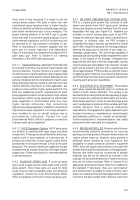TM-1-1500-344-23-2 - Page 171 of 240
A-1
NAVAIR 01-1A-509-2
TM 1-1500-344-23-2
15 April 2009
APPENDIX A
SUPPLEMENTAL REQUIREMENTS FOR NAVY AIRCRAFT
SECTION I. PAINT FINISHES AND TOUCH-UP PROCEDURES
A-1. SCOPE.
This section describes materials and
procedures used for applying protective paint finishes
to interior and exterior surfaces of Navy and Marine
Corps aircraft. This information is intended for use in
conjunction with system specific paint finishing
instructions. This section describes the following:
a. Safety precautions when storing and handling
paint materials;
b. Storage and shelf life considerations;
c. Paint systems used on Navy and Marine Corps
aircraft;
d. Paint application equipment;
e. Preparation of surfaces prior to painting;
f. Paint application techniques; and
g. Specific mixing and application information for
standard paint finishing materials.
A-2. SAFETY.
Paint materials, including primers and
solvents, are toxic and flammable. It is essential to
properly store, handle, and apply these materials to
prevent fires and to minimize exposure to solvent
vapors and paint overspray mist. All personnel involved
with paint operations shall read, understand, and follow
OPNAVINST 5100.23. Consult the local Occupational
Safety and Health Office or Industrial Hygiene Activity
for these references and appropriate safety precautions
pertinent to specific sites. Consult applicable material
safety data sheets (MSDSs) supplied by the
manufacturer for information on specific material
hazards. Additional safety information may be obtained
from the Hazardous Material Users Guide (HMUG) and
DoDI 6050.05.
A-2.1. RESPIRATOR USE. Respiratory protection
programs shall be established per OPNAVINST
5100.23. Whether painting operations are performed
indoors or outdoors, it is necessary to avoid inhalation
of vapors and dust. Solvents and thinners used for paint
processes, including those used for equipment cleanup,
are harmful if inhaled for prolonged periods and should
be handled with the same care as paint materials.
Contact the local Industrial Hygiene Activity or
Occupational Safety and Health Office for proper
selection of respiratory protection equipment. Refer to
Volume IV for ordering information for various respirators
and supplied air devices.
A-2.2. PROTECTIVE CLOTHING. Eye and skin contact
with paint materials and solvents shall be avoided.
Wear protective goggles or face shield, rubber gloves,
and coveralls. If paint materials or solvents contact the
eyes, rinse with fresh water for 15 minutes and seek
immediate medical attention. If contact with the skin
occurs, wash affected area with soap and water; if there
is excessive exposure or a severe reaction, seek medical
attention immediately.
A-2.3. VENTILATION. Adequate ventilation shall be
provided in all painting and storage areas to prevent the
buildup of solvent vapors. Painters and all other
personnel involved in the paint operation shall take
appropriate precautions to minimize exposure to solvent
vapors and paint overspray mist.
A-2.4. FIRE PREVENTION. Paint materials are
extremely flammable. These materials shall be stored,
mixed and applied in approved areas away from heat,
flame, sparks, and other sources of ignition. Ensure that
fire fighting equipment is readily available and in working
order. Consult the local Fire Department, Fire Marshall,
or Occupational Safety and Health Office for specific
fire prevention and safety requirements during painting
operations.
A-3. STORAGE AND SHELF LIFE.
All paint materials
shall be stored in tightly closed containers away from
excessive heat and cold. As a general rule, store paint
materials between 40
°
F and 100
°
F, away from direct
sunlight. Extreme storage temperatures can degrade
material quality and will reduce the effective shelf life of
paint materials.
A-3.1. IDENTIFICATION. All paint materials shall be
properly identified when stored. Containers should be
relabeled when necessary to ensure legibility. Previously
opened containers shall be closed and sealed tightly.
Paint thinners shall be stored with the same care as
paints.
Back to Top

